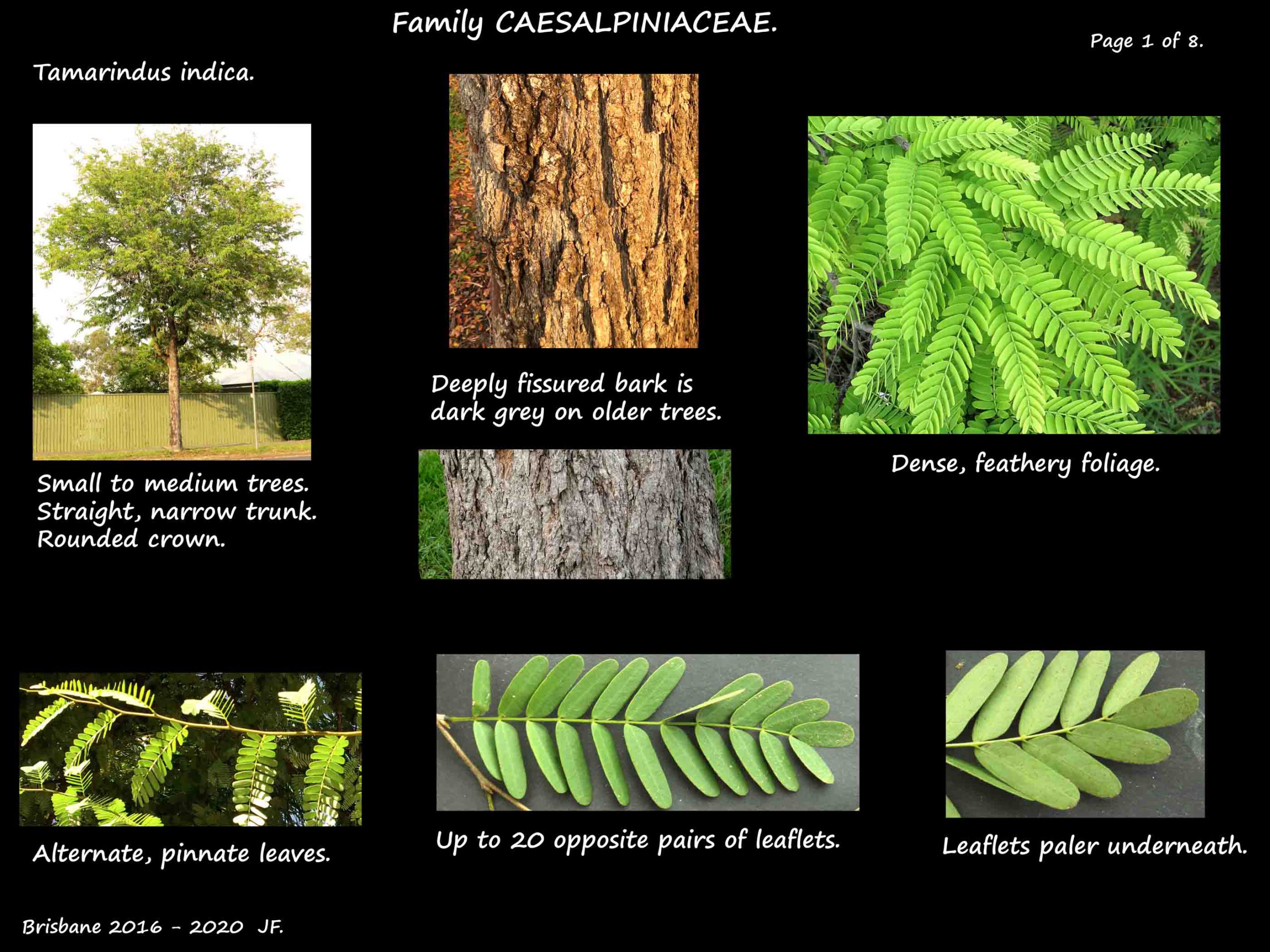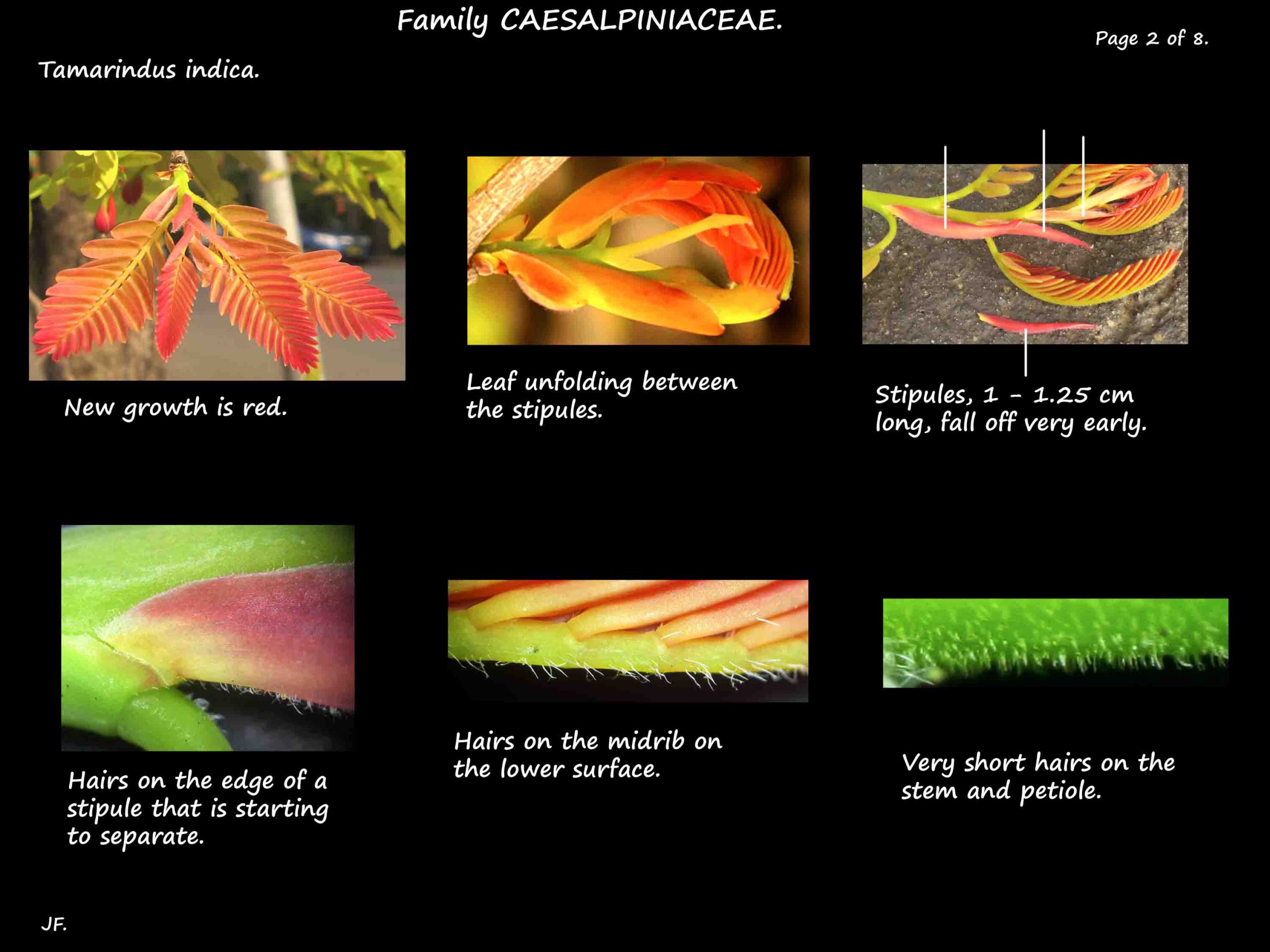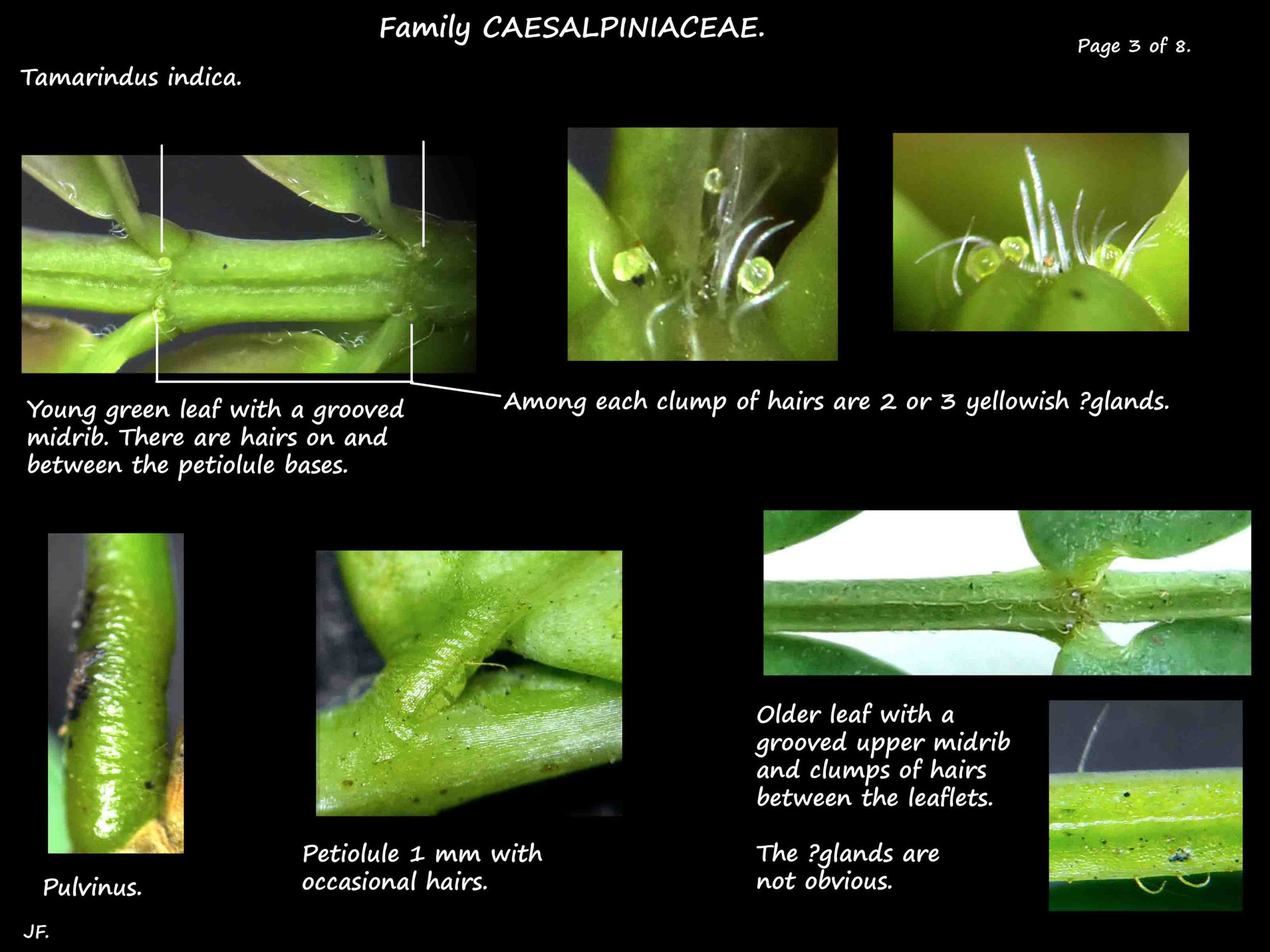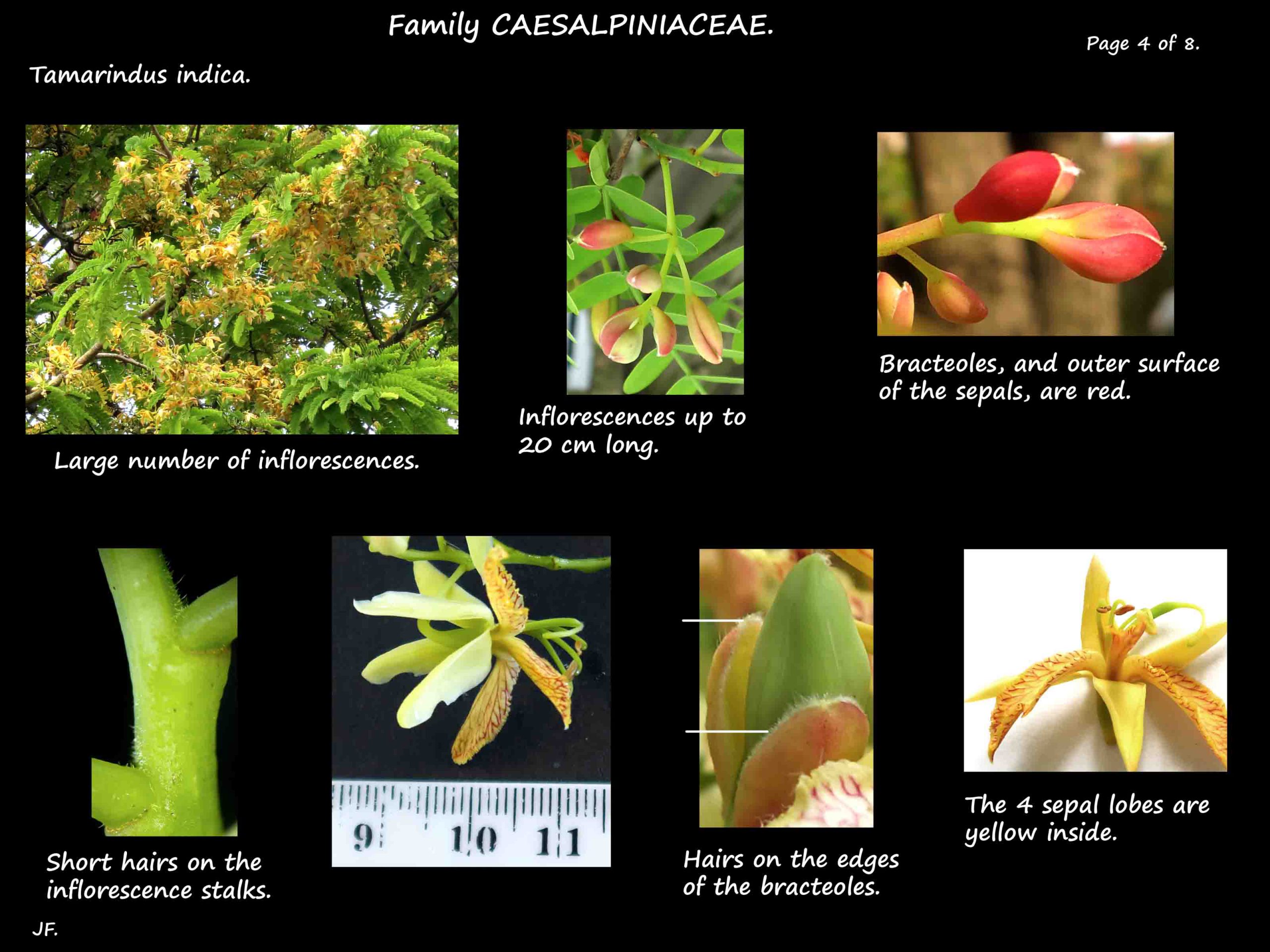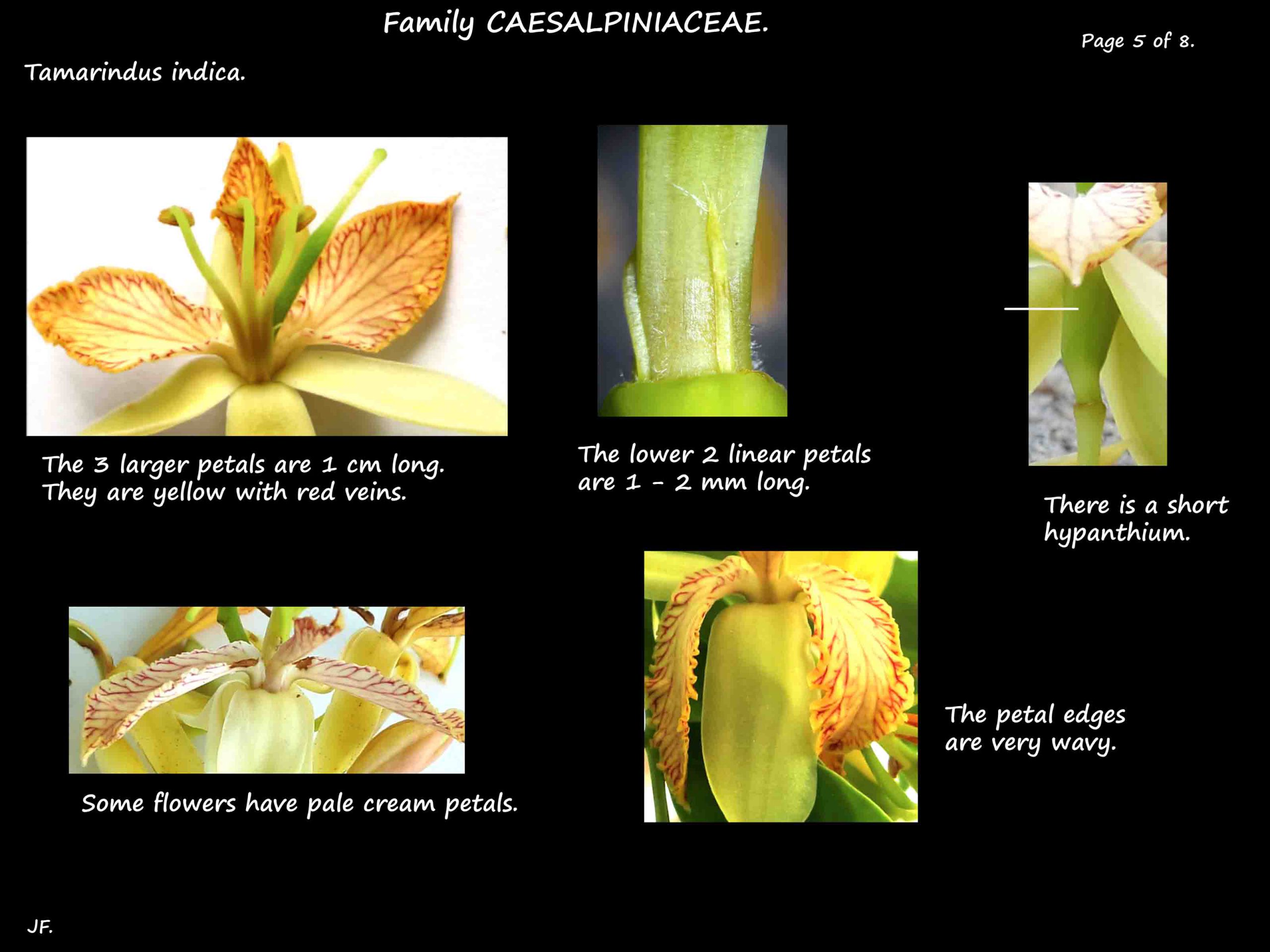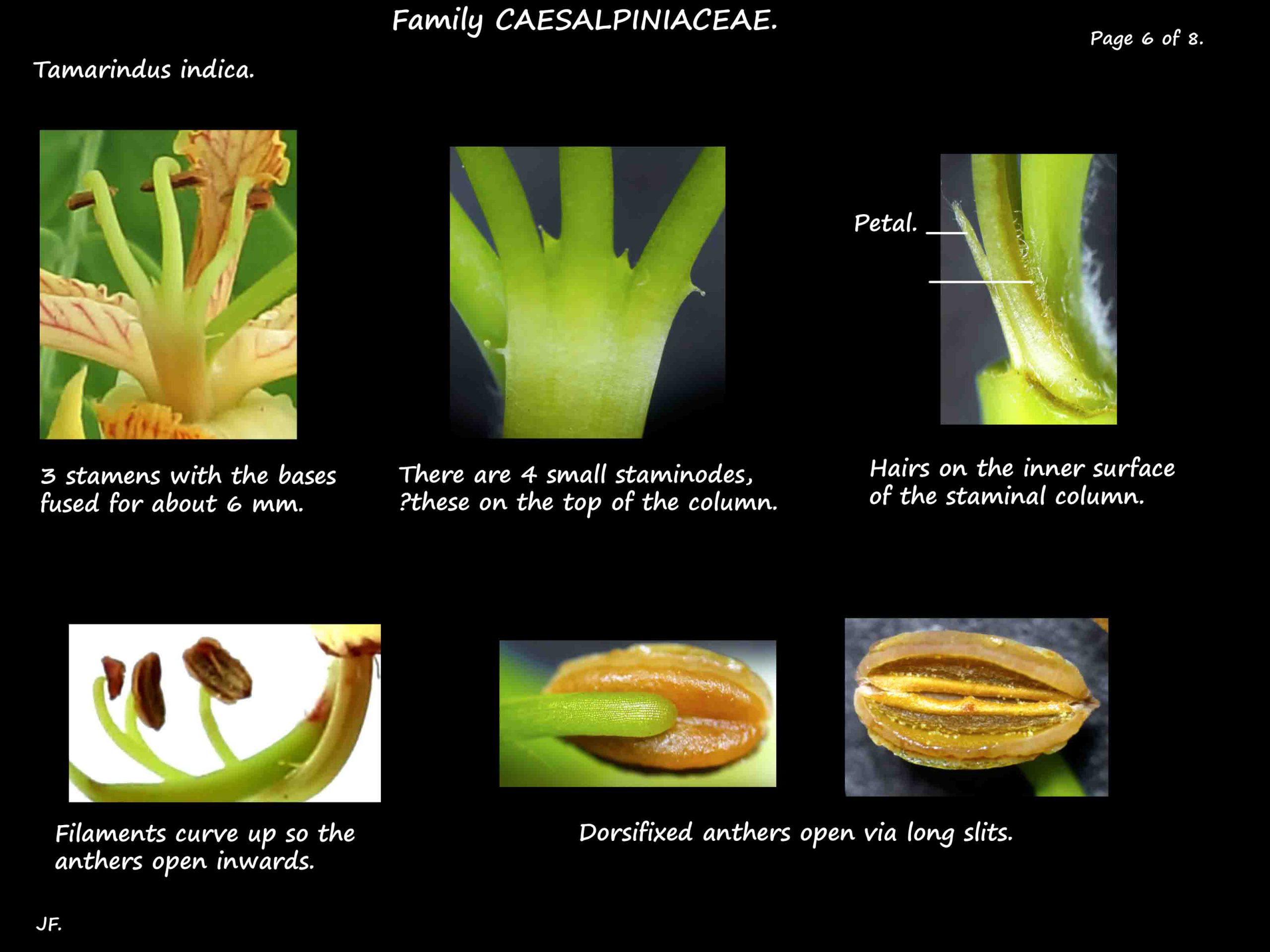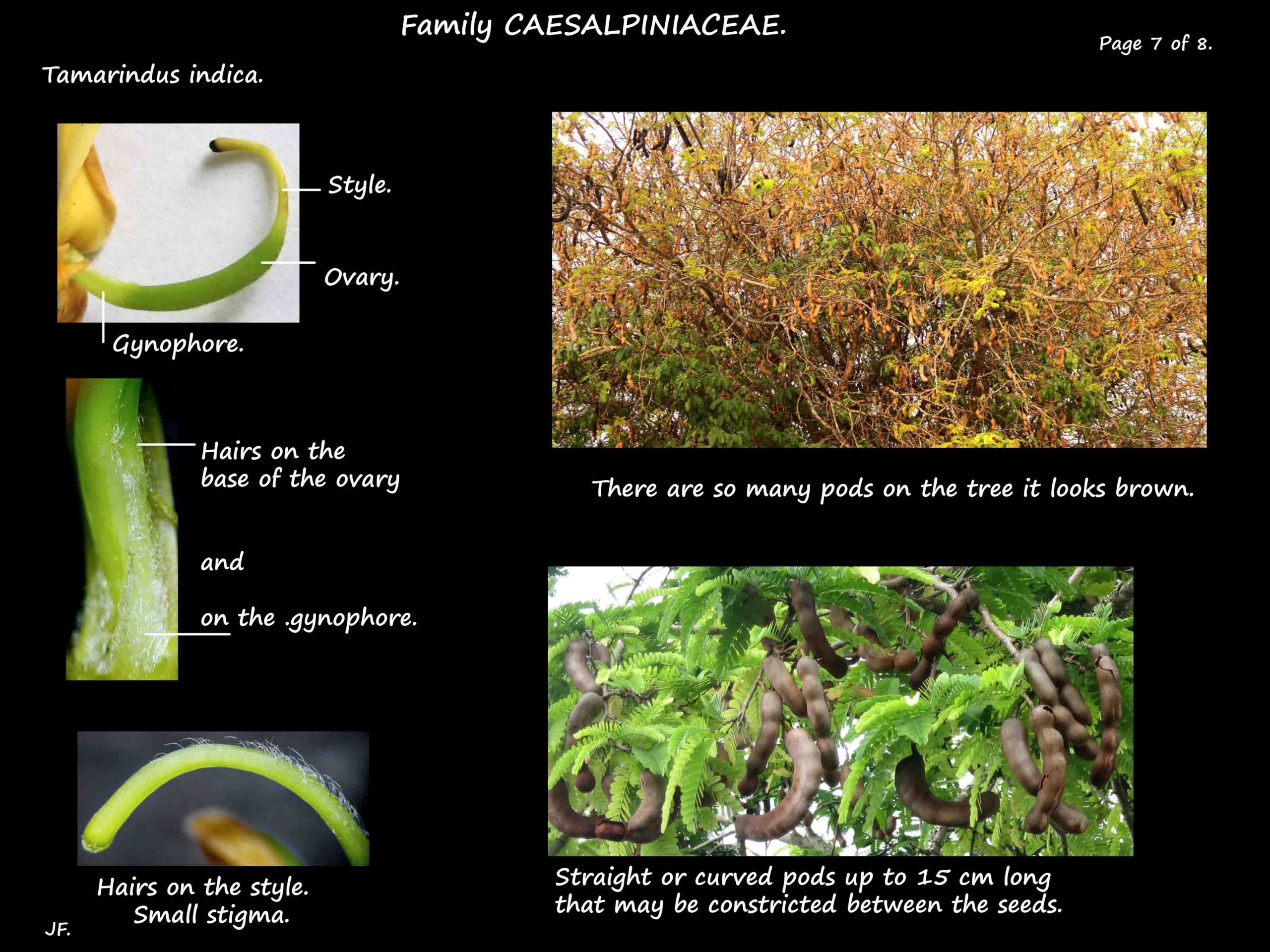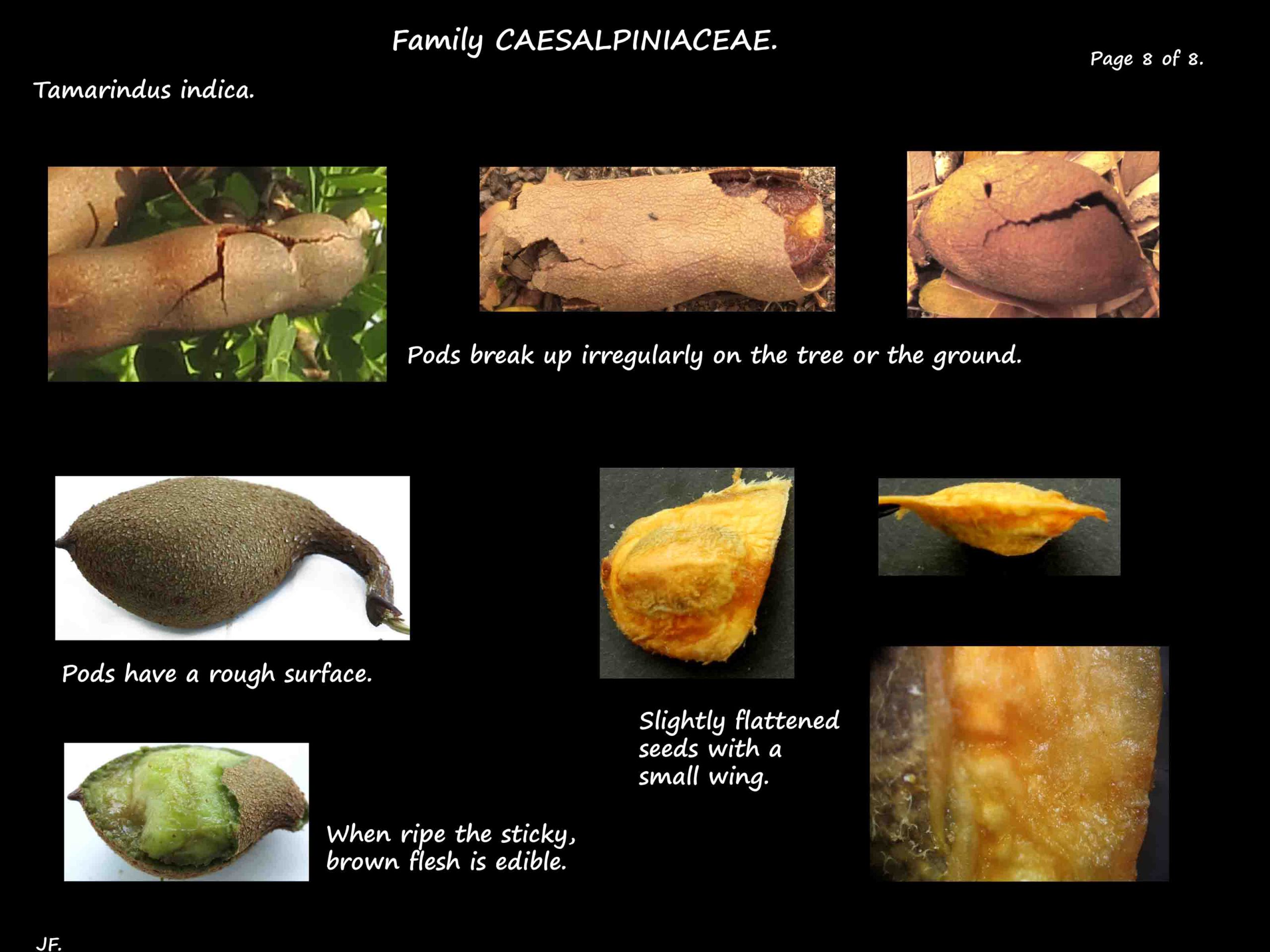Tamarindus indica.
Tamarind is in Family Caesalpiniaceae (sub-family Caesalpinioideae in Fabaceae s.l.).
From Africa, it is widely naturalised across northern Australia.
Found from north to south-east Queensland it is a weed in the northern areas.
Tamarindus indica is the only species in the genus.
They are trees around 12 to 15 (10 to 25) m high with a rounded crown.
The fissured bark is dark grey to almost black.
Young branches have some hairs.
The feathery, pale to mid-green, evergreen foliage is dense.
The alternate leaves, from 9 to 15 cm long, are pinnately divided.
There are narrowly ovate stipules at the base of the petiole.
They are 1 to 1.5 cm long and fall off early.
The upper surface of the midrib is grooved.
There are a few simple hairs on the petiole and midrib.
New growth is red.
Each leaf has 10 to 20 opposite pairs of leaflets that fold up at night.
The leaflets, on a petiolule under 1 mm long, are around 2.5 cm long and 0.5 cm wide.
They are narrowly oblong to elliptic with an asymmetric, rounded base.
There are usually some simple hairs especially at the base.
Inflorescences are spikes about 20 cm long with some hairs on the axis.
Flowers, about 2.5 cm wide, are on stalks or pedicels from 5 to 15 mm long.
There are hairy bracteoles about 6 mm long under the iflowers.
The flower stalks may be smooth or hairy.
The bases of the sepals, petals and stamens are fused into a hypanthium.
This is green, about 4 mm long, and contains the nectary tube.
The 4, 1 cm long sepal lobes are reddish outside and yellow inside.
There are 5 petals that tend to fall off easily.
The 3 larger petals, around 1 cm long, are yellow with red veins.
The other two petals are linear and only 1 to 2 mm long.
There are 3 long, fertile stamens with their bases fused for about 6 mm.
The filaments curve up and hold the dorsifixed anthers.
There are 4 small staminodes.
The ovary is on a stalk or gynophore that inserts into the hypanthium.
The ovary is covered in white hairs that extend up the style.
Masses of indehiscent brown fruit pods are produced.
From 3 to 15 cm long and around 2 cm wide they are straight or slightly curved.
The longer ones may be constricted between the seeds.
When ripe the pods become brittle and break open.
Each fruit has up to 12 flat brown seeds in an edible pulp.
The seeds are 1 to 1.5 cm.
There are a number of cultivars used commercially.
J.F.
